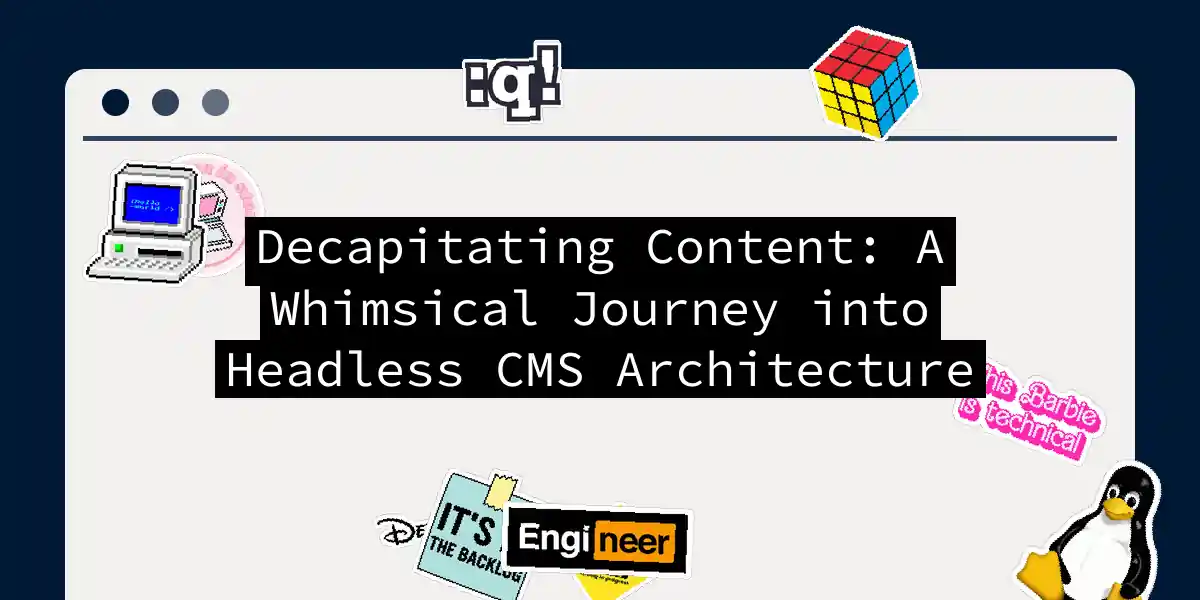Picture this: You’re at a pizza party where the chef keeps shoving crusts into your hands screaming “EAT IT WITH THE PEPPERONI OR DON’T EAT AT ALL!”. That’s traditional CMS. Now imagine a world where you get just the toppings (content) delivered fresh, and you put them on nachos, pasta, or even ice cream. Welcome to headless CMS architecture - the ultimate content buffet.
Anatomy of a Headless CMS
A headless CMS operates like a neurosurgeon who only cares about brains (content), not hairstyles (presentation). Three core components make this magic happen:
The content repository is where your digital assets live in organized chaos. Unlike your messy desk, this database supports structured content models:
// Sanity.io schema example
export default {
name: 'blogPost',
title: 'Blog Post',
type: 'document',
fields: [
{
name: 'title',
title: 'Title',
type: 'string',
validation: Rule => Rule.required()
},
{
name: 'body',
title: 'Body',
type: 'array',
of: [{type: 'block'}]
}
]
}
API layer: The digital equivalent of a hyperactive messenger pigeon. Modern CMS platforms offer both REST and GraphQL endpoints:
# Contentful GraphQL query
query GetCoffeeRecipes {
recipeCollection(where: {title_contains: "Coffee"}) {
items {
title
ingredients
steps
caffeineLevel
}
}
}
Frontend applications: Where developers get to play Picasso with content. Popular pairings include:
| Framework | Use Case | Content Velocity |
|---|---|---|
| Next.js | Marketing sites | 🚀🚀🚀 |
| React Native | Mobile apps | 🚀🚀 |
| SvelteKit | Web apps | 🚀🚀🚀 |
Building a Headless CMS in 5 Acts
1. Content Modeling Tango
Define your content structure like you’re writing a romance novel - every field needs purpose and passion. Pro tip: Use version control for your content models like you do for code.
2. API Configuration Ballet
Set up REST endpoints with parameter validation:
# FastAPI endpoint example
@app.get("/content/{content_id}")
async def get_content(content_id: str, lang: str = "en"):
content = fetch_from_cms(content_id, lang)
if not content:
raise HTTPException(status_code=404)
return JSONResponse(content)
3. Frontend Integration Slam Poetry
Connect your React app using modern fetching techniques:
// Next.js example with SWR
import useSWR from 'swr'
const CoffeeRecipes = () => {
const { data, error } = useSWR('/api/coffee-recipes', fetcher)
if (error) return <div>Error brewing data...</div>
if (!data) return <div>Grinding coffee beans...</div>
return (
<div>
{data.map(recipe => (
<RecipeCard key={recipe.id} {...recipe} />
))}
</div>
)
}
When Headless CMS Shines Brighter Than a Disco Ball
- Omnichannel publishing: Push content to Alexa skills while your CEO is asking “What’s our metaverse strategy?”
- Tech stack freedom: Want to build your frontend in Elm? Knock yourself out!
- Performance: Achieve Lighthouse scores so high they’d make Google blush
Survival Tips from the Content Trenches
- Cache like you’re preparing for the apocalypse: Implement stale-while-revalidate strategies
- Content previews: Build a draft mode that would make Houdini proud
- Error handling: Create fallback content that’s more comforting than a grandma’s hug As we close this digital Grimms’ fairy tale, remember: going headless isn’t about losing your mind, but finding freedom. Your content will thank you when it’s living its best life across 37 different platforms. Now if you’ll excuse me, I need to go teach my smart fridge how to render Markdown…
